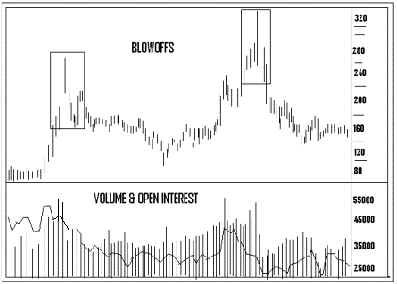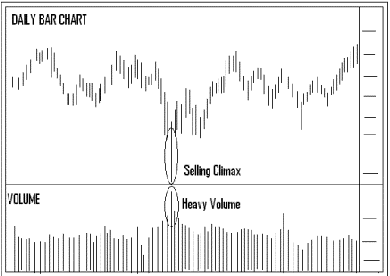There are two dramatic market actions that need to be mentioned when a stock trader is using volume and open interest as part of his technical analysis. They are blowoffs and selling climaxes. Blowoffs occur at major market tops. When trading in futures, blowoffs are often accompanied by a noticeable drop in open interest during the final rally. When there is a blowoff at market tops, prices suddenly rally sharply after a long advance and are accompanied by a huge jump in trading activity. Then they peak abruptly. See the rough graph below which shows two blowoffs. Notice how the prices rally on heavy volume (the vertical bars) with a decline in open interest (solid line).

Selling climaxes take place at market bottoms. This action is definedby prices suddenly dropping sharply on heavy trading activity, and then rebounding just as quickly. Below is a rough example of how a selling climax would look on a chart.

Andy Swan is co-founder and head trader for DaytradeTeam.com. To get all of Andy's day trading, swing trading, and options trading alerts in real time, subscribe to a one-week, all-inclusive trial membership to DaytradeTeam by clicking here.